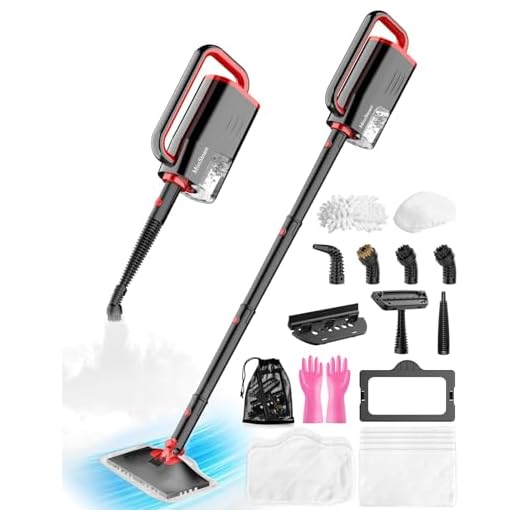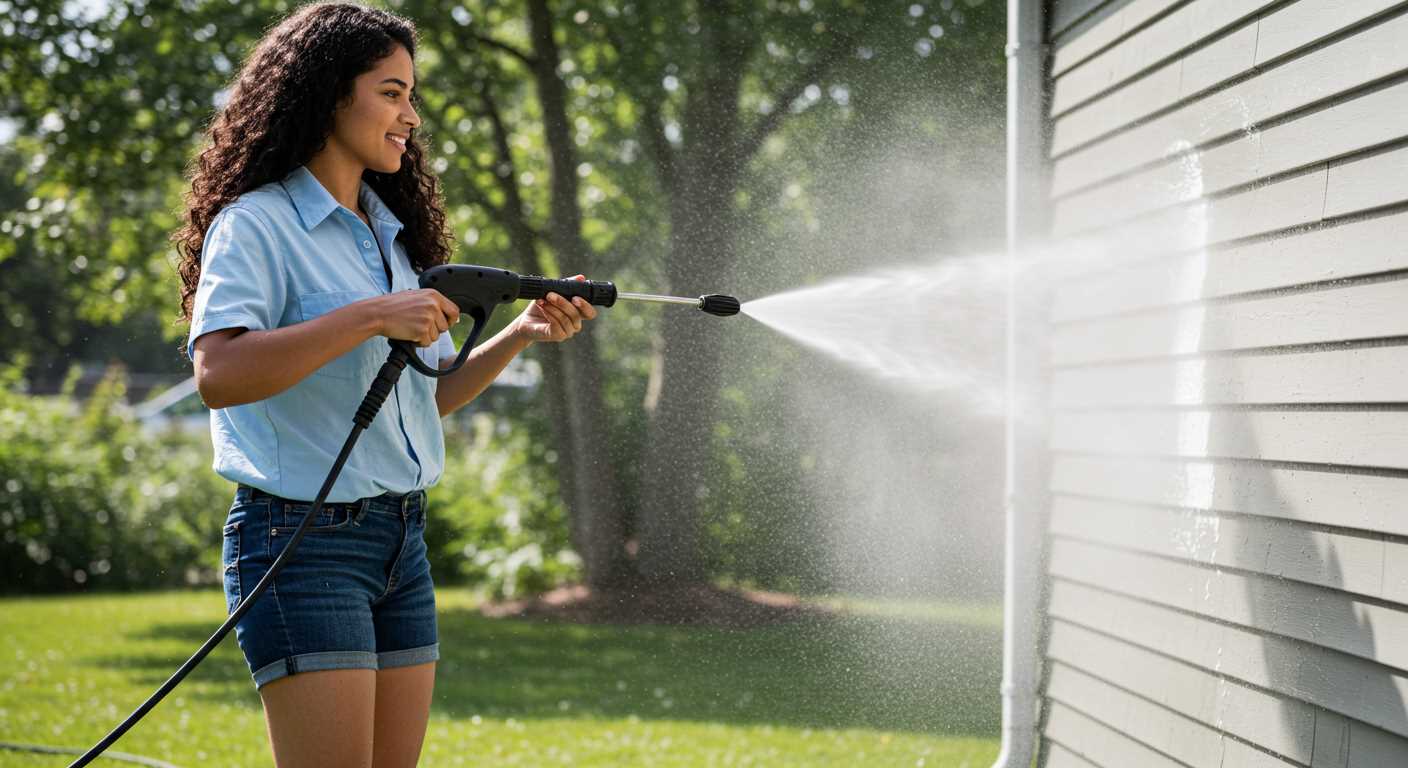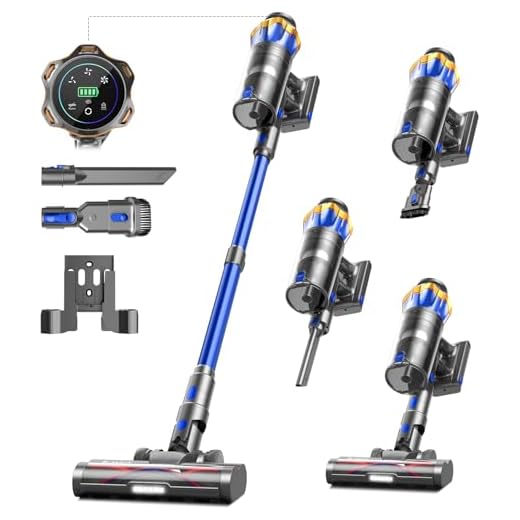



For anyone looking to restore the former glory of exterior surfaces, a simple concoction of warm water and white vinegar is your best ally. Mix a 1:1 ratio in a bucket, and you’ll have one of the most effective natural cleaning agents available. Apply generously onto stained areas and let it soak for at least 30 minutes to break down stubborn grime.
Following the vinegar application, grab a stiff-bristled broom or brush. Gently scrub the treated patches with consistent pressure. This method allows for the removal of dirt, moss, and algae, which tend to accumulate on porous surfaces over time. Opt for a circular motion to ensure you lift away all residues thoroughly.
If the stains persist, incorporate baking soda into your routine. Sprinkle it directly onto the damp areas and use your brush to work it into the surface. The mild abrasive quality of baking soda will further aid in eradicating any remaining marks without causing damage. Once complete, rinse everything with clean water for a brilliant finish.
For optimal results, consider timing your cleaning efforts in the early morning or late afternoon. The temperatures during these hours are typically milder, preventing the cleaning solution from evaporating too quickly and ensuring better adherence. This approach not only enhances the efficacy of your natural cleaning agents but also protects the integrity of the surfaces.
Effective Techniques for External Surface Maintenance
I recommend starting with a simple mixture of warm water and white vinegar. Combine equal parts and apply the solution generously using a mop or sponge. Allow it to sit for about 15 minutes to break down grime and stains, then scrub with a stiff-bristled brush.
Utilising Baking Soda
For tough marks, sprinkle baking soda directly onto the affected spots. Dampen it slightly with water and scrub the area. This gentle abrasive lifts dirt and brings back some shine.
Using Dish Soap Solution

Combine a few drops of mild dish soap with warm water in a bucket. Use a mop or brush to apply the soapy mix. This method effectively removes oil and debris without causing damage. Rinse thoroughly with clean water after scrubbing.
For deeper sets of dirt, consider using a solution of hydrogen peroxide for its bleaching properties. Mix it with baking soda to form a paste, apply to the stained areas, let it sit for approximately 30 minutes, then scrub and rinse.
Regular maintenance is key. Frequent sweeping and quickly addressing spills can help keep surfaces in excellent condition.
Choosing the Right Cleaning Solution for Your Tiles

For optimal results, I recommend selecting a cleaning agent that is specifically formulated for the type of surface you are dealing with. For instance, acidic cleaners work best on mineral-based surfaces, whilst alkaline options are suitable for organic residues. Consider natural options, such as vinegar or baking soda, which effectively eliminate grime while minimising environmental impact.
Types of Solutions to Consider
For a general purpose wash, a mix of warm water with a mild dish soap can work wonders. Combine one part soap with ten parts water for an efficient blend. For tougher stains, a paste of baking soda and water can provide the necessary abrasiveness without damaging the surface.
If you are tackling mould or mildew, a solution of bleach diluted with water can be effective. Use one cup of bleach per gallon of water, applying it to affected areas and allowing it to sit for a few minutes before rinsing thoroughly.
Commercial Cleaners
If you prefer ready-made solutions, choose a reputable brand that specifies compatibility with your particular flooring material. Look for products containing enzymes or surfactants, as these ingredients can break down dirt more effectively. Always follow the manufacturer’s instructions to ensure proper usage and safety precautions.
In any scenario, testing a small, inconspicuous area first is wise to avoid any unexpected reactions. This approach will help ensure that your choice does not discolour or damage your surfaces.
Preparing the Area for Cleaning Outdoor Tiles
Clear the space around the surface to ensure a smooth process. Remove any furniture, pots, or decorations that could obstruct your work area. This not only creates a safer environment but also enhances access to all areas needing attention.
Next, sweep the surface thoroughly. Use a broom to gather loose dirt, leaves, and debris. This step is critical as it prevents particles from scratching the surface during scrubbing.
Consider the following steps:
- Check for any cracks or loose pieces; repair them before starting.
- Inspect for mould or mildew, particularly in damp areas; it may need special treatment.
- Assess the drainage; ensure no water pools in the vicinity, as this can complicate cleaning.
If the area is exposed to sunlight, work in the early morning or late afternoon. High temperatures can dry out cleaning solutions too quickly, making them less effective.
Gather necessary tools, including:
- Stiff-bristled brush for scrubbing
- Bucket for mixing solutions
- Garden hose or watering can for rinsing
By taking these preparatory steps, you create an ideal foundation for a successful cleaning endeavour. A well-planned approach saves time and ensures optimal results.
Removing Stains and Grime from Tile Surfaces
Start by assessing the type of stain present on the surface. Organic stains, such as those from leaves or food, require different treatment than mineral stains or oil-based marks. For oily residues, apply a baking soda paste mixed with water. Leave it for approximately 15 minutes before scrubbing gently with a soft-bristled brush. Rinse thoroughly with clean water.
Proven Solutions for Specific Stains
.jpg)
For quick removal of green algae or mould, a solution of vinegar and water (1:1 ratio) works well. Spray the mixture, let it sit for around 30 minutes, then scrub and rinse.
If lichen or stubborn dirt is present, consider using oxygen bleach. Mix according to product instructions, apply, and allow it to activate for up to an hour. Agitate with a broom, then rinse off. This method is safe for most surfaces and less harsh than chlorine bleach.
Effective Tools for Stain Removal
Utilise various tools for optimal results. A stiff brush is ideal for tough grime, while sponge mops are excellent for general cleaning. Avoid metal brushes, which can scratch the surface.
| Stain Type | Recommended Solution | Application Method |
|---|---|---|
| Oil-based | Baking Soda Paste | Apply, wait, scrub, rinse |
| Organic | Vinegar and Water | Spray, wait, scrub, rinse |
| Lichen/Mould | Oxygen Bleach | Mix, apply, wait, scrub, rinse |
Regular maintenance reduces the need for deep cleaning. Schedule a routine wipe down with a suitable cleaner to keep surfaces looking pristine year-round.
Using Brushes and Tools for Cleaning Tiles
Select a stiff-bristled brush for stubborn dirt and grime. It allows for concentrated scrubbing on rough surfaces. The bristles penetrate crevices and textured areas, ensuring thorough removal of accumulated debris.
For expansive areas, a long-handled brush is advantageous. This tool reduces strain on the back and allows for better reach. I recommend using a brushing motion with steady pressure, ensuring every section is tackled evenly.
A nylon scrub pad can handle delicate surfaces while still providing effective results. When mixed with the right cleaning solution, it effectively lifts stains without scratching. For larger spaces, consider using a mop with a scrubbing side for efficient coverage.
Cleaning tools like sponges with an abrasive side can be beneficial for less resilient materials. They provide a gentle touch but maintain scrubbing power, suitable for routine maintenance. Remember to rinse the sponge frequently to avoid redistributing dirt.
An additional option is a bucket with warm, soapy water to dip brushes or sponges into. This method ensures that the cleaning solution remains effective throughout the process. I recommend a biodegradable dish soap for environmentally friendly cleaning.
For corners and tight spots, a detailing brush or an old toothbrush excels. This small tool ensures that no nook is overlooked, making it ideal for achieving a neat finish in intricate designs or patterns.
For safety, wear gloves to protect your hands from harsh chemicals or sharp debris. Strong footwear can provide better grip and stability while working on uneven surfaces. Always consider the wear of your cleaning tools and replace them as needed for optimal results.
Rinsing and Drying Techniques for Outdoor Surfaces
First, prepare a bucket of fresh water mixed with a mild detergent. Use a mop or sponge to apply this solution generously across the area, ensuring that it sits for a few minutes to help lift dirt and debris.
Rinsing Methods
After allowing the cleaning solution to work, it’s time for rinsing. Consider these methods:
- Hose Down: Use a regular garden hose with a sprayer attachment. Direct a steady stream of water to cover the entire surface, ensuring that all soap and dirt are flushed away.
- Bucket Technique: For smaller sections, fill a bucket with clean water and pour it over the surface. A gentle motion helps move the debris towards the edges.
- Squeegee Assistance: A squeegee can be excellent for supporting the removal of excess water after rinsing. Push the water towards a drain or grassy area to avoid puddling.
Drying Techniques
After rinsing, proper drying is crucial to prevent any slipping hazards and deterring mould growth:
- Air Dry: Allowing natural air circulation can be effective. A sunny day will accelerate the drying process significantly.
- Towel Dry: For immediate use, take a clean, absorbent towel or microfibre cloth to wipe down the surface, focusing on any remaining damp areas.
- Leave it to the Wind: On breezy days, positioning outdoor furniture or strategically placing towels can help facilitate airflow across the surface, speeding up the drying.
By utilising these rinsing and drying strategies, surfaces can be kept pristine without resorting to more intensive equipment.
Maintaining Cleanliness of Outdoor Tiles After Cleaning
To ensure your surfaces stay pristine, regularly sweep away loose dirt and debris, preventing buildup that can stain or damage. Use a broom or a leaf blower for quick removal.
Apply a protective sealant once they are clean and completely dry. This creates a barrier against moisture and contaminants, making future maintenance easier. Reapply every 1-2 years for best results.
Consider using mats or rugs in high-traffic areas to minimise soil transfer. These can catch dirt and grime before it reaches the surface, reducing the frequency of deep cleaning.
Immediately wipe up spills to avoid staining. For substances like oil or food, a quick blotting action followed by a gentle cleaner will prevent lasting marks.
Establish a seasonal cleaning routine. Regular upkeep, ideally every few months, will keep the surfaces looking fresh and prevent heavy soiling.
Utilise a diluted vinegar solution periodically to deter moss or algae growth. Spray the mixture on affected areas and allow it to sit for a while before rinsing thoroughly.
Regular inspections for cracks or damage will help in addressing issues before they worsen. Prompt repairs can prevent dirt accumulation in these areas.
Keep plant life trimmed back to reduce leaf litter and organic debris that can accumulate and lead to staining. This simple step can dramatically lower maintenance efforts.










